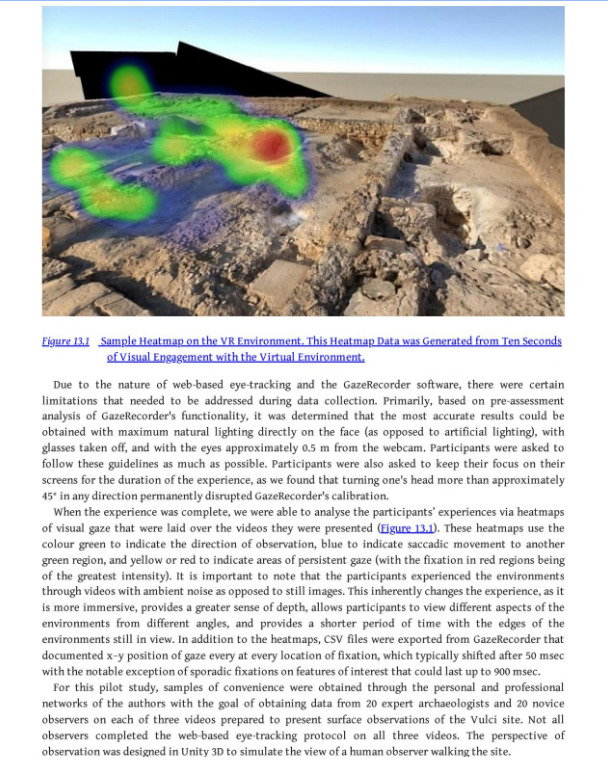
This contribution discusses quantitative and qualitative methods in visual and neurocognitive analyses of archaeological excavations. The study and observation of on-site excavations is a very complex experience, which requires different methods of observation. How does an archaeologist look at an artefact, a stratigraphic layer or a monumental architecture? Is the level of embodiment and sensorimotor experience the same for archaeologists and non-archaeologists? The archaeological identification of layers, architectural patterns, clusters of artefacts during the excavation involves specific skills, taxonomies, and visual/sensorial comparative spatial analysis. This pilot project, entirely conducted during the COVID-19 lock down at Duke University, aimed to use eye-tracking and electroencephalography (EEG) data collection during the virtual observation of an archaeological excavation for a group of non-archaeologists and archaeologists. The virtual excavation, based on digital photogrammetry and optimized in Unity 3D, was the visual interaction test for the two groups of participants, evaluated by web-based eye-tracking methods.
Preliminary results of this investigation show that archaeologists and non-archaeologists behave differently in their visual investigations of an archaeological site and that this could be explained by a differing sensorimotor embodied experience. Follow-on studies using EEG and other means for analysing neurocognitive activity are aimed at characterising the embodied sensorimotor experiences of experts and novices both in the laboratory setting and on site.
